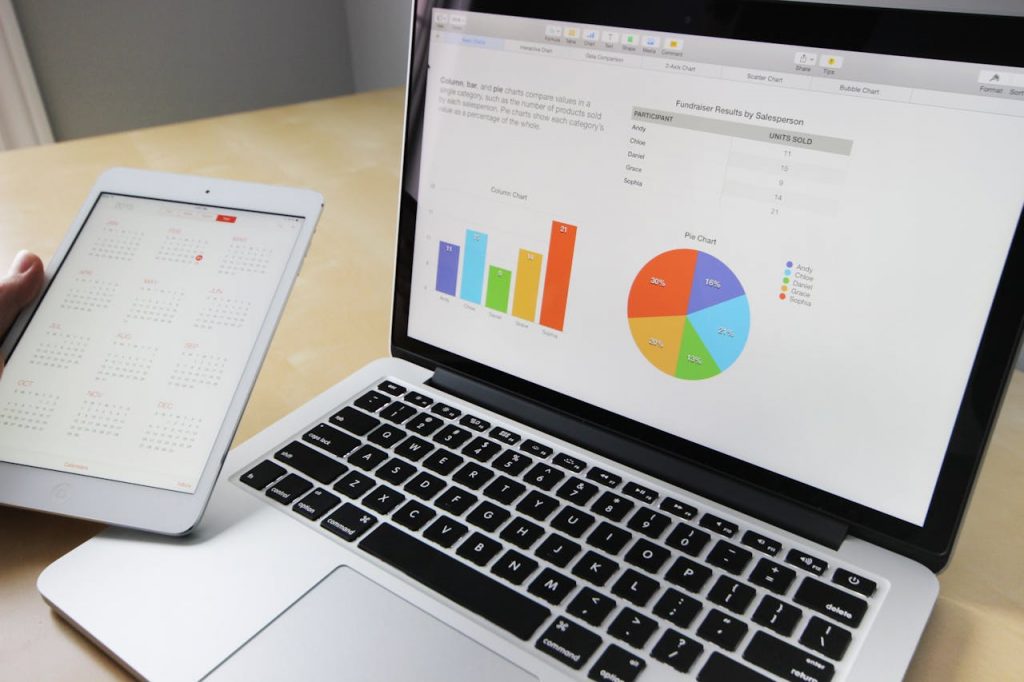In a world where every click can turn into profit, email is the key to a customer’s heart. Marketing through email is a tool that can transform a business. In this ultimate email marketing guide, we’ll reveal the secrets of email marketing mastery. They’ll help you grab your audience’s attention and retain it, turning one-time visitors into fans of your brand.

What is email marketing?
The process of email marketing is from sending emails to potential and existing customers. The main goals are to inform the user, attract attention, build loyalty, and of course, increase sales. Brands can directly communicate with the community using this tool. But it is necessary to know some subtleties.
Basic steps for successful email marketing
How to start email marketing for a beginner? Let’s break down what you need to pay attention to to maximize your profits. Below are the steps to achieve results: It is enough to understand a few steps. To build a successful email marketing strategy, you need to:
- Define goals and build a strategy. The first step is to define your email marketing goals. Based on the goals, you can build a strategy and stick to it.
- Build a quality subscriber base. The very beginning of a successful email marketing campaign is collecting email addresses of your target audience. It is important to follow the principles of permission marketing when you invite users to subscribe to your newsletter through your website, blog, or social media. It’s worth clearly explaining how they will benefit from subscribing.
- Audience segmentation. Segment your subscribers using a subscription form. There are many tools like SendPulse to create a form. Newsletters are much more effective when messages are tailored to the specific interests and needs of subscribers. Use behavioral and preference data to create segmented newsletters.
- Create valuable and relevant content. Your emails should provide value to subscribers. You need vivid and compelling content, compelling headlines, and calls to action.
- Personalization and automation. Use subscriber data to personalize your messages, making them more personal and relevant.
- Process Automation. Email marketing optimization is sending emails to potential customers or clients based on certain criteria. Many services can be used to automate email marketing. For example, Mailchimp, Sendinblue, ActiveCampaign, and others.
- Testing and analytics. Conduct regular A/B testing of different elements of your email campaigns (e.g., headlines, design, content, and send times) to determine the most effective strategies. Use analytics to track results and adjust approaches.
- Send emails by special dates. Sending messages around holidays can be an additional trigger.
- Reactivate passive subscribers. Do not rush to remove a user from the mailing list. You can send a reactivation email. Use this email to find out why subscribers are not engaging with your brand. After users click the unsubscribe link in your email, you can provide them with a form where they can provide a reason for unsubscribing.
You can do email marketing on your own, or you can entrust everything to professionals.

Why email marketing works
Email marketing continues to be one of the most effective tools in a digital marketer’s arsenal. There are many reasons for this.
- High engagement. Users who subscribe to your newsletter have already shown interest in your brand or product. This makes them open to communication;
- Direct access. You send the email to the user’s inbox, bypassing intermediaries as well as social media competition.
How email marketing works
There are 4 key functions email marketing has:
- Increasing sales. First and most basic. With email offers and promotions, you need to stimulate interest and buying activity;
- Attracting traffic. Emails can contain links to your website or blog. This will help increase traffic and SEO metrics;
- Strengthening customer relationships. Regular communication helps to maintain and develop a relationship with your audience. But you can’t go into spam;
- Collecting feedback. The email marketing process is an effective way to find out what customers think about your products or services and gather suggestions for improvement.
Features of email marketing
Email is an indispensable part of marketing and promotion. By using it, users can get:
- High ROI (return on investment). Compared to other marketing channels, email often has one of the highest ROIs;
- Scalability. Email marketing is suitable for small businesses to large corporations;
- Measurability. Using analytics, you can accurately track the results of each mailing, analyze user behavior, and adjust your strategy;
- Personalization. Using email, a company can create customized content that is relevant and interesting to each recipient.
Types of email marketing
There is also a difference in the types of marketing. They differ in their orientation to a specific target audience and content. In the email marketing guide, we have identified the following types:
- Newsletters. Regular emails containing company news, articles, guides, and other informational content;
- Commercial offers. Letters with promotions, special offers, discount coupons aimed at stimulating sales;
- Transactional emails. Automatic notifications, order confirmations, and everything related to user actions;
- Triggers. Their main goal is to build personalized communication with the customer, responding to their request;
- Personalized mailings. Emails are adapted to the interests, behavior, and preferences of a particular user. This significantly increases their effectiveness.
Triggers in different areas
Trigger emails automate email marketing. It allows you to put routine processes on the stream, save resources, and send messages to subscribers at the most appropriate time. We’ve included trigger emails like this in our email marketing guidelines:
- E-commerce: promotions, limited offers, personalized discounts;
- B2B: industry research, case studies, invitations to webinars and events;
- Services: personalized service offerings based on a customer’s previous experience or interests;
- Education: informational materials, professional development courses, educational webinars.
Remember, the key to improving your open rate is to constantly test and adapt your strategies to your audience’s preferences and behaviors.

Improving your open rates
Increasing email open rates is a key objective in email marketing. To get people to open emails more actively, you should consider some factors and use triggers. The email marketing process differs depending on the focus of the business.
Attractive and clear headlines
The first thing your user will see is the headline of the email. It should be succinct and informative. To make the headline attractive, you can use these techniques:
- Use trigger words. Words that press on the user’s pain points, generate interest, or provide a benefit;
- Personalization. Add the recipient’s name or other unique information;
- Specificity and clarity. Be clear about what the recipient will find in the email, avoiding generic phrases.
Optimize dispatch time
Decisive in increasing the open rate can be the timing of receiving the email. You need to be clear about who should receive the message and when. Send emails at a time when your target audience is most active. This can vary depending on the day of the week, time of day, and geolocation.
Use A/B testing to determine the most effective time to send to your audience.
Audience segmentation
Send content that maximizes the interests and needs of specific segments of your audience.
Quality and relevant content
Your user should only receive quality and useful information. Make sure that the content of the email is useful for the recipient, whether it is informative content, exclusive offers, or personal recommendations.
You can link the content of emails to current events, trends, or holidays. This will increase user interest.
Clean subscriber list
Remove inactive subscribers and those who have unsubscribed. This way you can increase your overall open rate.
How to succeed in email marketing
There are techniques and tips from experienced marketers, the use of which can increase productivity. But for email marketing to deliver the expected results, there are pitfalls to consider. Here’s what you should pay attention to.
- Use top services to create a mindmap and mailing strategy. Xmind is great for professionals, while beginners can try the free mind42;
- Take time to design your mailing. You can create a unique design yourself in «Photoshop» or «Figma». You can go the easy way and take a ready-made template in «Email Gallery»;
- Work with text. Hire a professional copywriter to create unique and relevant content for email newsletters.
The pitfalls
To avoid hurting your marketing strategy, you need to pay attention to the pitfalls. For our email marketing guide, we’ve selected the most important ones:
- Irrelevant content. Sending uninteresting or irrelevant content can increase unsubscribes and decrease subscriber engagement;
- Excessive frequency of emails. Overly frequent emails can annoy subscribers and contribute to increased unsubscribes. It’s important to find a middle ground;
- Ignoring mobile users. Half of users read emails on mobile devices, so it is important to adapt the design of emails for mobile screens;
- The email headline plays a key role in a subscriber’s decision to open the email or not. Ineffective headers can reduce the open rate of your newsletters.

Use email marketing platforms for email automation
Using email automation platforms greatly simplifies the process of creating, sending, managing, and analyzing email newsletters. These tools offer a wide range of features. For example: message personalization, audience segmentation, A/B testing, automated responses, and detailed analytics. In our email marketing guide, we’ve gathered popular services for sending and automating the process.
Mailchimp
Mailchimp — there’s a user-friendly interface, a wide range of email templates, detailed analytics and segmentation capabilities. «Mailchimp» is suitable for both small businesses and large companies.
Sendinblue/Brevo
Using Sendinblue you will be able to automate marketing including email newsletters, SMS marketing, and chat.
GetResponse
In GetResponse you can find tools for email newsletters and solutions for creating lendings, webinars, and sales funnels.
ActiveCampaign
ActiveCampaign specializes in email marketing automation and CRM. This service offers advanced features for creating personalized customer itineraries. This is possible thanks to the automatic sequencing of emails based on customer behavior and preferences.
HubSpot email marketing
HubSpot is ideal for companies that already use other «HubSpot» products. Here you can integrate marketing, sales, and service processes into a single ecosystem.
FAQ
Getting your newsletters in spam can be due to several reasons.
- Use of spam words in email headers and body text;
- Lack of permission to send emails from recipients (for example, if the address list was purchased or collected without users’ consent);
- Low recipient interaction with previous emails (few opens, clicks).
To improve the situation, it’s important to follow the rules of permission marketing, optimize content, and clean up your subscriber list regularly.
To increase subscriber engagement, follow email marketing basics. That is, segment your audience and send personalized content. The text should be relevant to the user’s interests and needs. Using analytics to understand your audience’s preferences and A/B testing different elements of emails (e.g., headlines, design, sending time) can help.
It depends on many factors, including your business type, campaign goals, and audience preferences. It’s important to find a balance so you don’t overwhelm your subscribers. Start with a weekly newsletter and adapt the frequency based on audience response and analytics. Regular testing and feedback will help you determine the ideal frequency for your audience.
How do you measure the effectiveness of an email marketing campaign?
The effectiveness of an email marketing campaign can be measured using many key performance indicators (KPIs). It includes:
- Open rate (open rate);
- Click-through rate (CTR);
- Conversion rate (how many recipients performed the desired action, for example, made a purchase);
- Number of unsubscribes and spam complaints.
Most email automation platforms provide detailed analytics on these and other metrics.

